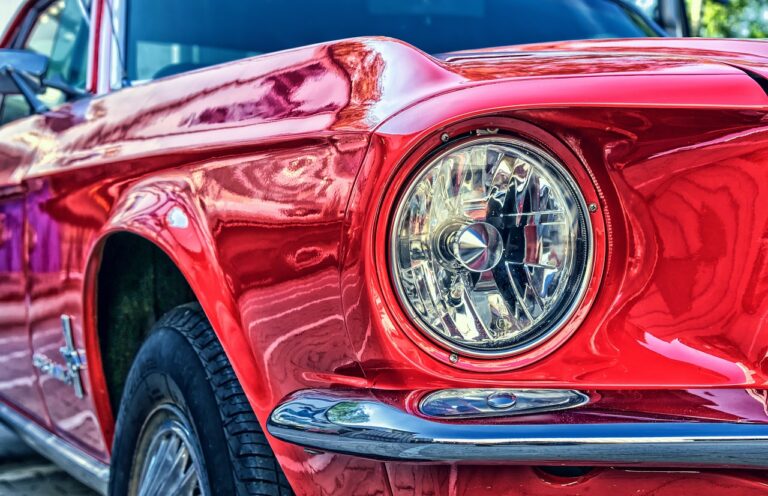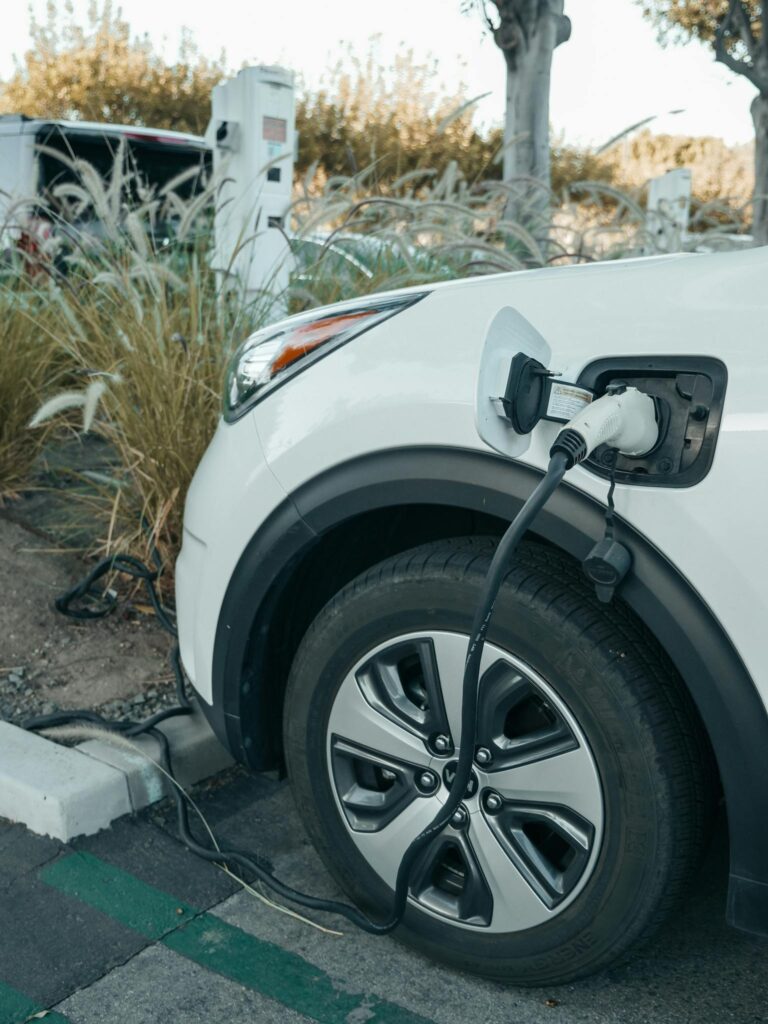Head-to-Head: 2024 Tesla Model 3 vs. BMW i4 M50
The electric vehicle landscape has evolved dramatically, and nowhere is this more evident than in the luxury performance sedan segment. The refreshed 2024 Tesla Model 3 and BMW i4 M50 represent two distinct visions of the future: Silicon Valley’s tech-forward disruption versus traditional German luxury performance. With both vehicles targeting driving enthusiasts who want to make the switch to electric power, this comparison pits Tesla’s latest update to their best-selling sedan against BMW’s purpose-built electric performance machine. At stakes are not just acceleration times and range figures, but fundamentally different approaches to how we interact with and experience modern luxury vehicles.
Quick Take:
- Tesla Model 3: Tech-focused, minimalist design, lower starting price
- BMW i4 M50: Traditional luxury, superior handling, higher build quality
- Both offer sub-3.5 second 0-60 mph times
- Price difference: $16,055 before incentives

Performance and Driving Dynamics
The battle between the refreshed 2024 Tesla Model 3 and the BMW i4 M50 represents a classic showdown between Silicon Valley innovation and German engineering prowess. In our comprehensive testing, these electric sports sedans showcase distinctly different approaches to performance, with each offering compelling advantages.
Quick Take:
- Tesla Model 3 Performance: 455 hp, 0-60 mph in 3.1 seconds
- BMW i4 M50: 536 hp, 0-60 mph in 3.3 seconds
- Tesla excels in straight-line acceleration
- BMW offers superior handling dynamics
Straight-Line Performance
The Model 3 demonstrates Tesla’s mastery of instant torque delivery, launching from standstill with an urgency that pins passengers to their seats. Despite having less horsepower than its German rival, the Tesla’s lighter curb weight and sophisticated traction control system help it achieve a marginally quicker 0-60 mph time. The i4 M50, however, maintains stronger pulling power at higher speeds, particularly evident in 60-120 mph acceleration runs.
Handling and Road Manners
BMW‘s decades of performance car development shine through in the i4 M50‘s handling characteristics. The adaptive M suspension system provides better body control through aggressive cornering, while maintaining a more composed ride on rough surfaces. Though the Model 3 offers sharp turn-in response and excellent grip, its somewhat artificial steering feedback leaves enthusiast drivers wanting more connection to the road.
Track Performance
Around our test track, the i4 M50 posted consistently faster lap times, benefiting from its superior brake cooling and more sophisticated chassis tuning. The Model 3 showed signs of power reduction after multiple hot laps – a common characteristic of many EVs under sustained high-performance driving. However, for typical sporty driving scenarios, both vehicles deliver more than enough capability to satisfy most enthusiasts.
Driver Assistance Features
Both vehicles offer advanced driver assistance systems, but their approaches differ significantly. Tesla’s Autopilot system provides more autonomous capability in straight-line highway driving, while BMW’s Active Driving Assistant Pro excels in natural-feeling intervention and smoother operation in complex traffic scenarios. The i4 M50‘s system feels more polished in urban environments, though Tesla’s frequent over-the-air updates continue to improve its capabilities.
Verdict
While the Tesla Model 3 edges out the i4 M50 in straight-line acceleration and offers more advanced autonomous features, BMW’s superior handling dynamics and more consistent performance delivery make it the more compelling choice for driving enthusiasts. Both vehicles demonstrate just how far electric performance has come, but they achieve their goals through notably different philosophies.
Technical Specifications:
Tesla Model 3 Performance
- Dual motor AWD
- 455 hp combined output
- 0-60 mph: 3.1 seconds
- Top speed: 162 mph
- Weight: 4,048 lbs
BMW i4 M50
- Dual motor AWD
- 536 hp combined output
- 0-60 mph: 3.3 seconds
- Top speed: 168 mph
- Weight: 4,883 lbs
Interior Technology and User Experience
The technological approach between these two electric sport sedans highlights a fundamental difference in philosophy. Tesla maintains its minimalist, screen-centric interior design in the 2024 Model 3, while BMW opts for a more traditional cockpit enhanced by modern digital elements in the i4 M50. This contrast sets the stage for a fascinating comparison of how drivers interact with these sophisticated machines.
Quick Take:
- Tesla: 15.4-inch horizontal touchscreen, minimalist design
- BMW: 14.9-inch curved display plus 12.3-inch digital cluster
- Tesla relies almost entirely on touch controls
- BMW maintains physical controls for key functions
Central Display Systems
Tesla’s centerpiece 15.4-inch horizontal touchscreen handles virtually every vehicle function, from climate control to navigation. The interface remains lightning-quick and responsive, though the learning curve can be steep for newcomers. BMW’s curved display combination provides a more conventional layout, with the 14.9-inch touchscreen working in harmony with the 12.3-inch digital instrument cluster, offering drivers multiple ways to access key features.
Voice Command Capabilities
Both vehicles offer advanced voice control systems, but their capabilities differ significantly. BMW’s Intelligent Personal Assistant responds more naturally to conversational commands and shows better comprehension of context-based requests. While Tesla’s voice commands are functional, they’re more limited in scope and require more specific phraseology to achieve the desired results.
Smartphone Integration
The i4 M50 offers both wireless Apple CarPlay and Android Auto, integrating seamlessly with most users’ digital lives. Tesla continues to resist third-party integration, instead providing its own proprietary phone app with extensive functionality – including remote climate control, vehicle monitoring, and Sentry Mode viewing. The Tesla app generally offers more features but lacks the familiarity of CarPlay or Android Auto that many users prefer.
Over-the-Air Updates
Tesla maintains its leadership position in software updates, regularly introducing new features and refinements through over-the-air updates. The Model 3 frequently gains new functionality, from gaming options to improved Autopilot capabilities. While BMW has embraced OTA updates with the i4 M50, their approach is more conservative, focusing primarily on system optimization and bug fixes rather than feature additions.
Interface and Usability
Daily interaction reveals the strengths and weaknesses of each approach. Tesla’s minimalist interface looks cleaner but requires more attention to operate while driving, as even basic functions like adjusting mirrors or wipers require touchscreen interaction. BMW’s blend of physical controls and digital interfaces proves more intuitive during driving, though its iDrive 8 system can feel overwhelming with its deep menu structure.
Verdict
The BMW i4 M50 offers a more conventional and immediately familiar user experience, while the Tesla Model 3 presents a more forward-looking but occasionally challenging interface. Tech-savvy users may prefer Tesla’s innovative approach, but BMW’s balanced integration of physical and digital controls provides better ergonomics during actual driving.
Technical Specifications:
Tesla Model 3
- 15.4-inch horizontal touchscreen
- Custom Linux-based OS
- 5G connectivity
- Premium audio with 14 speakers
- Gaming capability with wireless controller support
BMW i4 M50
- 14.9-inch curved touchscreen
- 12.3-inch digital instrument cluster
- iDrive 8 operating system
- Harman Kardon surround sound (16 speakers)
- Wireless Apple CarPlay/Android Auto
Value Proposition and Running Costs
When investing in a premium electric vehicle, the initial purchase price tells only part of the story. The 2024 Tesla Model 3 and BMW i4 M50 represent different approaches to luxury EV value, with considerations ranging from purchase incentives to long-term ownership costs that savvy buyers need to consider.
Quick Take:
- Tesla Model 3 Performance: Starting at $53,240
- BMW i4 M50: Starting at $69,295
- Tesla offers lower initial cost
- BMW includes more standard luxury features
Purchase Price and Incentives
The Tesla Model 3 Performance’s lower starting price provides an immediate advantage, undercutting the i4 M50 by over $16,000. However, BMW currently qualifies for the full $7,500 federal tax credit, while Tesla’s credit has been reduced to $3,750 as of 2024. After accounting for available incentives, the real-world price gap narrows to approximately $12,250 – still significant but not as dramatic as the initial numbers suggest.
Charging Network and Infrastructure
Tesla’s Supercharger network remains a compelling advantage, offering widespread availability and seamless integration with the vehicle’s navigation system. While BMW drivers can access multiple charging networks, including Electrify America and ChargePoint, the experience isn’t as streamlined. Tesla’s recent decision to open its Supercharger network to other brands may eventually level this playing field, but for now, Tesla maintains the edge in charging convenience.
Maintenance and Service Costs
Projected five-year maintenance costs:
- Tesla Model 3: $3,200
- BMW i4 M50: $4,800
BMW follows a more traditional service model with scheduled maintenance intervals, while Tesla’s approach minimizes regular service requirements. However, BMW’s established dealer network typically offers more consistent service experiences compared to Tesla’s sometimes-stretched service centers.
Insurance Considerations
Insurance costs favor the Tesla Model 3, with average annual premiums running about $2,100 compared to $2,600 for the i4 M50. These differences stem from factors including repair costs, parts availability, and historical claim data. However, rates can vary significantly based on location and individual driving history.
Resale Value Projections
Three-year depreciation estimates:
- Tesla Model 3: 37%
- BMW i4 M50: 42%
Tesla has historically maintained stronger resale values in the EV segment, though BMW’s established luxury reputation helps minimize the gap. The i4 M50‘s newer platform may face more uncertainty in the used market, while the Model 3‘s proven track record provides more stable value retention.
Total Cost of Ownership (3-Year Projection)
Tesla Model 3 Performance:
- Purchase price (after incentives): $49,490
- Estimated electricity costs: $4,200
- Maintenance: $1,920
- Insurance: $6,300
- Total: $61,910
BMW i4 M50:
- Purchase price (after incentives): $61,795
- Estimated electricity costs: $4,500
- Maintenance: $2,880
- Insurance: $7,800
- Total: $76,975
Verdict
The Tesla Model 3 Performance presents a stronger value proposition purely from a financial standpoint, with lower initial costs and reduced operating expenses. However, the BMW i4 M50 justifies its premium pricing through superior build quality, more traditional luxury appointments, and a more established dealer network. Buyers prioritizing absolute value will find the Tesla more appealing, while those seeking a more traditional luxury experience may find the BMW’s higher costs worthwhile.
Note: All prices and estimates are based on 2024 data and average U.S. market conditions. Individual costs may vary based on location, driving habits, and local incentives.
Final Verdict: Choosing Your Electric Sport Sedan
After extensive testing and real-world evaluation, both the 2024 Tesla Model 3 and BMW i4 M50 prove themselves worthy contenders in the electric sport sedan segment, albeit for different types of buyers. The Tesla continues to excel in areas that made the brand famous – cutting-edge technology, superior charging infrastructure, and excellent value proposition. Its lower price point, frequent software updates, and straightforward ownership experience make it an attractive option for tech-savvy buyers making their first move into premium EVs.
The BMW i4 M50, however, emerges as the more complete luxury sport sedan. Despite its higher price tag, it delivers a more polished driving experience, superior build quality, and a level of refinement that better justifies its premium positioning. The blend of traditional BMW driving dynamics with modern electric performance will particularly appeal to enthusiasts who aren’t ready to completely abandon conventional luxury car attributes.
Editor’s Choice: BMW i4 M50
While the Tesla Model 3 offers better value and remains an excellent choice, the i4 M50‘s superior driving dynamics, more refined user experience, and higher-quality interior make it our pick in this comparison. It better bridges the gap between traditional luxury sport sedans and the electric future, even if that excellence comes at a premium.
Best For:
Tesla Model 3
- Tech enthusiasts
- Value-conscious buyers
- Those prioritizing charging network
- Minimalist design lovers
BMW i4 M50
- Driving enthusiasts
- Traditional luxury buyers
- Those seeking superior build quality
- Buyers wanting conventional controls
Remember: Your choice ultimately depends on your priorities – whether you value Tesla’s innovation and value proposition or BMW’s refinement and driving dynamics. Either way, both vehicles demonstrate just how far electric performance sedans have come, and hint at an even more exciting future ahead.






